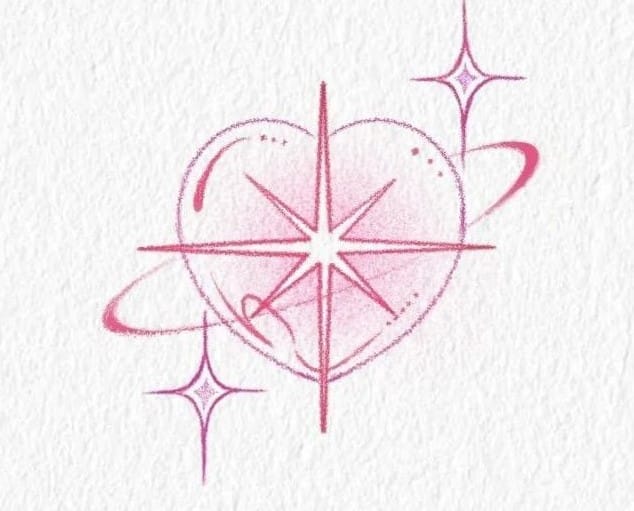Mandala Art For Mindfulness: Your Zen Zone

Latika Kelkar
February 16 , 2025

What is a Mandala?
Mandala means a “circle” in Sanskrit, the ancient language of India. This art form originated from the ancient Buddhist tradition. Mandalas are circles with intricately detailed patterns, joining together at a single, central point that symbolises the universe. The patterns include common symbols like eight spokes, bells, lotus flowers, triangles, diamonds, and the sun.

Photo by Fabio Santaniello Bruun Team on Unsplash
The Versatility of Mandalas
Everybody is aware of the traditional pen and paper method of drawing a mandala, but anything can become a canvas for drawing mandalas. You can create mandalas on mugs, clothes, bags, pots, stones, boards, and sand too. You can simply use pens or acrylic paints to draw mandala patterns on various objects.
You can also use sand of various colours, like the traditional Buddhist monks, to create different patterns, or you can also use construction papers of various colours to cut different patterns and stick them within your design to create a Mosaic Mandala. This art form provides an interesting way to unleash creativity and imagination.

Photo by Raimond Klavins Team on Unsplash
How Mandalas are Relevant Today
In today’s fast-moving world, taking a break and relaxing has become a necessity. Mandala provides an excellent way of detaching oneself and immersing in the beauty of art. Mandalas are commonly used in art therapy and colouring exercises for concentration and relaxation. They have positive effects on mental health and stress reduction.
What began as a spiritual symbol for Buddhists and Hindus has tremendously helped modern society find a balance between stress and self-care. The deliberate use of colours and shapes helps those who struggle to practice meditation to deal with stress, sadness, and frustration in a therapeutic way.
Many cultures, including Western cultures, have embraced mandalas. In the modern context, it is used in a sacred space, as a lucky charm to attract fortune and prosperity, as a stress buster or as artwork.

Photo by Moritz Kindler Team on Unsplash
The Science Behind Mandalas
The Art of Mandala is based on a few scientific theories, and the repetitive and symmetrical patterns have a calming effect on the brain. These patterns are found throughout nature to convey beauty and balance. This shifts the brain into a relaxed state, much like deep breathing.
It activates both brain hemispheres. The left brain is logical and analytical, which engages in recognising patterns and symmetry within mandalas. The right brain is involved in creativity and artistic expression. This creates a balance that improves concentration and emotional well-being.
This interesting technique stimulates the release of melatonin, a hormone that slows cell ageing and improves sleep. Mandalas also strengthen the immune system by alleviating negative feelings and discomfort,t which promotes restful sleep.

Photo by oskar holm Team on Unsplash
Mandalas over Meditation
If you struggle to sit still during meditation, making mandalas can be an effective alternative. Drawing or colouring mandalas enhances focused attention. This makes you fully aware of the present, creating a state of mindfulness. The process can induce a flow state, which helps you enjoy and withdraw from worries and anxiety.
The relaxed state can help you to reflect on your thoughts and emotions. This can be a powerful tool for self-discovery and growth. Mandala, which started as a religious symbol to connect with spirituality, has become a tool to connect with the inner self.
The therapeutic benefits of mandala are not just limited to achieving a meditative state. A study has shown that colouring mandalas is also helpful in reducing anxiety. It calms chaos and helps organise negative thoughts.

Photo by Vaishnavi Chourasia Team on Unsplash
The Art That Embraces Imperfections
Looking for clarity and guidance? We’ve got you! Seeking professional help is the first step toward a fulfilling life—reach out to us for a FREE Consultation today!
You do not need to have artistic skills to make mandalas. Focusing on the process is essential. Find a quiet space to relax and stay away from distractions to fully enjoy the process. Start with a simple dot at the centre of the page and draw as many circles as possible around it.
Fill the circles with basic shapes and patterns that come to your mind. Let go of any expectations about perfection. Explore and experiment with different colors Remember that there are no rules when it comes to creating art. It should be a therapeutic process.
There are ample amounts of mandala designs accessible on the internet. You can print out and fill the designs with colors of choice. Mandala coloring books have also become popular and are widely available for adults and children in supermarkets and bookstores.
Overall, mandalas are not just beautiful patterns, but they are a tool for mindfulness and tranquillity. Creating mandalas can help slow down, bring clarity, and explore the artistic side. If you find making mandalas helpful, why not take it to the next level? Reach out to us; we're here for you.
Keep Reading
Started reading,
found my glow!
New blogs dropping soon – Sign up!
© EmbraceWell. All rights reserved


























